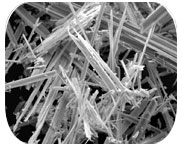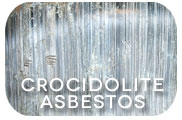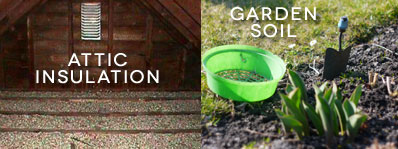
Asbestos is a group of naturally occurring silicate minerals characterized by small, but relatively long and thin fibers. Individual fibers can only be seen with a microscope. They do not dissolve in water or evaporate. They are resistant to heat, fire and chemical or biological degradation and have been used in many commercial products around the world, including insulation, brake linings and roofing shingles.
What is Asbestos?

Asbestos is a group of silicate minerals characterized by small, but relatively long and thin fibers. Individual fibers can only be seen with a microscope. It is naturally occurring and can be made up of asbestiform varieties of: chrysotile (serpentine); crocidolite (riebeckite); amosite (cummingtonite/grunerite); anthophyllite; tremolite; and actinolite. Separated asbestos fibers are strong enough and flexible enough to be spun and woven.
Because of its strength and heat resistant properties, asbestos has been used for several manufactured goods. Asbestos is used for insulation and is fire-retardant. It has been used in building materials (roofs, tiles, paper products and cement products), friction products (brakes, clutches and other parts) and heat resistant materials. The combined use of detection methods called light microscopy, electron microscopy, and energy dispersive X-ray analysis offer the most accurate approach to identify asbestos and to estimate concentrations that may become airborne upon disturbance.
Asbestos Exposure
Exposure to asbestos-contaminated vermiculite occurs mostly during occupational exposure or exposure to contaminated clothing among worker’s families. Other community exposures also occur among people that live near the facilities or by direct contact with vermiculite or waste products from these facilities. Everybody is potentially exposed to low levels of asbestos in the air, however, people who work in industries such as, mining, making asbestos products, automobile brake or clutch repair industry or the construction industry, especially demolition or renovation may have been exposed to higher levels of asbestos at the workplace.

When asbestos products are damaged or disturbed, fibers become airborne and can cause significant health problems when they are inhaled. Naturally occurring asbestos can be released from rocks or soils by routine human activities, such as construction, or natural weathering processes. If naturally occurring asbestos is not disturbed and fibers are not released into the air, then it is not a health risk.
Types of Asbestos

There are two general types of asbestos, amphibole and serpentine. Regulatory agencies such as the U.S. EPA and OSHA recognize six asbestos minerals: chrysotile, a serpentine mineral with long and flexible fibers; and five amphibole (with relatively brittle crystalline fibers) minerals, actinolite asbestos, tremolite asbestos, anthophyllite asbestos, crocidolite asbestos, and amosite asbestos.
Where is Asbestos Found?
Insulation and Building Materials: Asbestos can be found in a variety of building materials, such as insulation, ceiling or floor tiles, and cement pipes. Amphibole asbestos has been found in some vermiculite sources used as home and building insulation.
Consumer Products: Vermiculite is also commonly sold in gardening and hardware stores. It was used as a soil amendment (conditioner to improve soil quality) or fertilizer carrier and was an ingredient in many potting soil mixtures.

Who is at Risk?
Basically, anybody working or living around potential asbestos contaminated areas may be at risk. Workers or homeowners involved in demolition work, maintenance, repair or remodeling of buildings containing these products can be exposed to higher airborne fibrous amphibole levels than levels in ambient air. However, exposure can occur only when materials containing asbestos are disturbed in some way to release fibers into the air. When asbestos-containing materials are solidly embedded or contained, exposure risk will be minimal. Ultimately, it is up to you to determine the risks and the ARP is always here to help.

When in doubt, we encourage you to call the ARP hotline before starting any project at (406) 291-5335.
Learn more about the health risks of asbestos here.
Learn more about the health risks of asbestos here.

